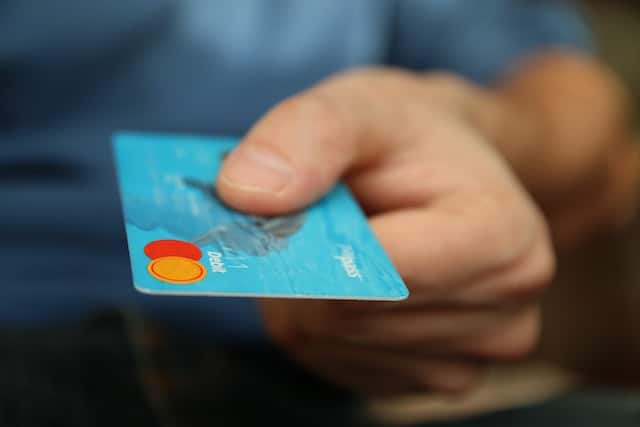Setting up a business from scratch is not a joke. It is a big ordeal. You need capital to launch products in the market and then promote it. Plus, there are operating expenses that you need to take care of. So, everything comes to business capital? Unless you are a millionaire, you must get into debt to start your dream business. Buy what is good vs bad debt?
Is It Bad To Get Into Business Debt?
Sometimes, entrepreneurs have no choice but to get into debt, which is not necessarily bad. Not all debt is bad. Many companies are running successfully with business loans. Airbnb and Uber are prime examples.
It all comes down to the type of debt you are getting into, and whether you work with a trusted advisor like Accountants East London. Good debts help your business to prosper, whereas bad debt ruins it.
What Is Good Debt?
Contrary to popular belief, debts are not bad if you can use it judiciously. Suppose you take out a business loan to buy an asset that helps to grow your company; it is considered good debt. Or, you take out a business loan to hire more employees or develop a new product.
What Is Bad Debt?
Again, bad debt is money you have given to someone who can’t or wouldn’t pay you back. This may include your employees or stakeholders. Another example of bad debt is borrowing money to cover expenses triggered by a lack of proper financial management in your business.
Bad debts are usually expensive and carry high-interest rates. As such, entrepreneurs need help repaying these loans. Bad debt for small businesses refers to borrowing that does not contribute to the growth or profitability of the business and may even hinder its financial stability.
Here are typical examples of bad debt:
1. Taking on high-interest debt to cover operating expenses:
Short-term high-interest debts are prime examples of bad debts. You incur bad debt if you use credit cards to cover your business expenses. Since the average credit card interest rate is relatively high, it leads to fast debt accumulation. The biggest challenge is to pay off the debt due to the compounding interest rate, which leads to financial stress.
2. Borrowing money without any proper plan:
You want to start a business. That’s fine. But do you have a proper business plan? Investing money in a risky business venture without a clear plan is a disaster, and it will surely lead to bad debt.
- Examples of risky business venture
- Speculative investments
- Vague business concepts

3. Excessive Borrowing Money
While borrowing money for your business is fine, taking out a loan to cover non-essential expenses is wrong. This includes luxury renovations, buying expensive but unnecessary assets, and investing in useless ventures. These investments don’t add any value to your company.
A short synopsis of good debt vs bad debt
Good debt helps your business grow. Bad debt affects your cash flow and business. An example of healthy debt is a small business loan used to buy machines for faster product deliveries. A business credit card with very high interest rates used to make the office look glamorous is an example of bad debt. It doesn’t increase a business’s net worth. It only ruins the business’s finances.
How to deal with bad debts
Good debts lead to business expansion and growth. But we can’t say the same about bad business debts. Bad debts can bring down your business, so it is vital to get rid of them as soon as possible. Here are some tips to do that.
1. Analyze your budget or set up a new one.
Check your budget plan and find out where you spent more money than what was required. While analyzing your budget, you may discover the unnecessary expenses that led to debt accumulation. If you haven’t followed your budget for the past few months, chances are high that you were not aware of most of these expenses.
2. Consolidate your debts
Do you have too much debt? Check your debt, calculate your interest payments, and calculate your current monthly payments. If you have multiple high-interest and unaffordable small business loans, try consolidating them.
You have two goals: First, you need to replace several loans with a single affordable monthly payment. Second, you need to protect your business credit score. So, the best way to do it is to take out a debt consolidation loan at a low-interest rate and clear your existing debts.
Focus on the high-interest business debt. Have you pledged any collateral against the loan? If yes, you should manage your cash flow and try to pay this business debt first. Look at your financial statements. You will find both good and bad debt there. Next, contact banks and financial institutions that offer debt consolidation loans at a low-interest rate.
Once your application is accepted, you can use the money borrowed to make debt payments.

3. Settle your debts
Have you incurred credit card debt in your personal life on top of your business debts? Many times, people mix their personal and business finances. They use their personal credit cards to cover their business expenses. As such, they cross their credit limits and rack up credit card debt. This is, again, a bad debt. Entrepreneurs need to get out of it, and the best way to do this is to settle their credit card debts. You can negotiate with creditors for this, or you can speak to a debt settlement attorney about it.
If you have taken out payday loans or cash advance loans to cover your monthly payments, you can settle them as well.
4. Seek advice from a professional financial advisor.
Explain your current financial situation to a professional financial advisor. They can tell if you should consolidate debts, settle, or file bankruptcy. They know market trends and can help you resolve your financial problems quickly. They can also warn you against possible legal issues you may face.
How to stay away from debt in the first place
1. Impose late fees
Set clear payment terms in your contract if you want to avoid small business debt. Impose penalties if your clients make late payments. As a business owner, you must send invoices immediately after delivering products. You can also introduce special discounts for prompt payments.
2. Ask your clients to pay bills on time.
Customers are like gods to entrepreneurs. There is no doubt about it. But there is a catch. If your customers don’t pay bills on time, it’s time to let them go. There is no point in having loyal customers if they don’t pay for your services or products. You will lose some contracts. Your loyal customers may promise to pay you back soon. Don’t get swayed by empty promises. Ask them to pay now or stop giving your services. This may help you avoid bad debt.
Conclusion
Before you begin your journey as an entrepreneur, understand the implications of taking on good and bad business debt. If a small business loan helps to add to the future value of the business, it is a good debt. But if the loan has exorbitant interest rates and long repayment terms, it is a bad debt. Make sure you avoid predatory loans by all means.

Lyle Solomon has extensive legal experience, in-depth knowledge, and experience in consumer finance and writing. He has been a member of the California State Bar since 2003. He graduated from the University of the Pacific’s McGeorge School of Law in Sacramento, California, in 1998 and currently works for the Oak View Law Group in California as a principal attorney.











Leave a Reply